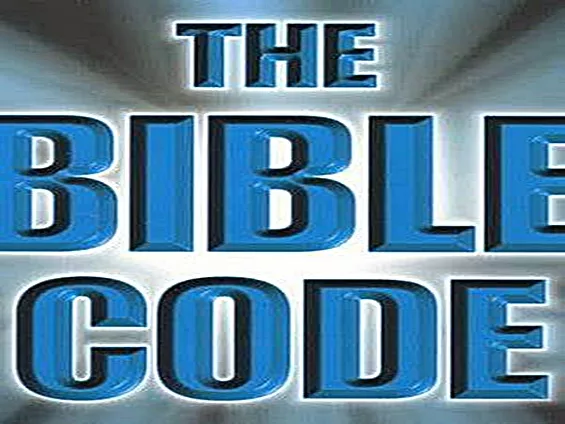The “Bible Code” is a term that refers to a purported set of hidden messages or codes within the Hebrew Bible (the Old Testament of the Christian Bible). These codes are said to be discovered through a process called equidistant letter sequence (ELS), in which letters are selected at regular intervals from the text, forming words, phrases, or sentences that are seen as hidden messages or predictions of future events. The concept gained widespread attention in the 1990s with the publication of the book “The Bible Code” by Michael Drosnin and subsequent documentaries and media coverage.
Here is an expansive and detailed explanation of the Bible Code, its history, criticism, and its validity:
History and Background:
- Early Interest: Interest in the idea of hidden codes in religious texts dates back centuries. Jewish mystics, known as Kabbalists, believed in the existence of hidden meanings within the Torah (the first five books of the Hebrew Bible). They practiced a form of exegesis called Gematria, which assigns numerical values to Hebrew letters to uncover hidden messages.
- Modern Bible Code Claims: The modern concept of the Bible Code gained prominence in the late 20th century. It was popularized by Michael Drosnin’s book “The Bible Code,” published in 1997, and also featured in the documentary “The Bible Code: The Future and Beyond.”
The Process of Finding Bible Codes:
- Equidistant Letter Sequence (ELS): The primary method used to find Bible codes involves selecting letters from the original Hebrew text at equal intervals. For example, every nth letter might be chosen, forming a sequence of letters.
- Statistical Analysis: Proponents of the Bible Code claim that meaningful words, phrases, or predictions can be found by analyzing these sequences statistically. They argue that the probability of finding such meaningful sequences by chance is extremely low, implying that they must be intentional.
Controversy and Criticism:
- Lack of Scientific Validity: Many scholars and scientists argue that the Bible Code theory lacks scientific rigor. They assert that similar codes can be found in any sufficiently long text, not just the Bible, and that the statistical significance of these codes is often overstated.
- Subjectivity: Critics point out that the selection of the equidistant letter sequences is highly subjective and can be manipulated to produce desired results. Skeptics argue that without strict guidelines and objective criteria, the Bible Code is open to interpretation.
- No Predictive Power: Despite claims of predicting future events, proponents of the Bible Code have been unable to demonstrate consistent, accurate predictions that can be verified independently.
Validity and Mainstream Rejection:
- Mainstream Rejection: The Bible Code theory is not accepted by mainstream religious scholars, scientists, or mathematicians. Major religious denominations, including Judaism and Christianity, do not endorse or recognize the Bible Code as a valid method of interpretation.
- Lack of Peer Review: The Bible Code research has not undergone rigorous peer review in reputable scientific or academic journals, further diminishing its credibility.
- Skeptical Investigations: Several books and articles have been written debunking the Bible Code, citing mathematical and statistical flaws, as well as the absence of concrete predictions coming true.
Proponents of the Bible Code have claimed to find the following examples of hidden messages, prophecies, and references to historical events in the text of the Hebrew Bible. It’s important to note that these claims are highly controversial and disputed by skeptics and mainstream scholars. Here are a few examples of what some proponents have claimed to find:
- Assassination of Yitzhak Rabin: One of the most widely cited examples of the Bible Code is the alleged prediction of the assassination of Israeli Prime Minister Yitzhak Rabin in 1995. Proponents claim that by using equidistant letter sequences, the code revealed phrases such as “Rabin,” “assassin that will assassinate,” and “Amir” (the name of Rabin’s assassin). Critics argue that these findings are the result of selective data mining and can be found in other texts as well.
- World War II and the Holocaust: Some proponents have claimed that the Bible Code contains references to World War II, Adolf Hitler, and the Holocaust. They argue that phrases like “Hitler,” “Holocaust,” and “extermination” can be found hidden in the text. Critics contend that these findings are the product of random chance and do not constitute meaningful predictions or prophecies.
- Natural Disasters: Proponents have also claimed that the Bible Code contains references to natural disasters and specific dates of significant events. For example, they have suggested that the code predicted earthquakes or other catastrophic events. Skeptics argue that these interpretations are highly speculative and not supported by credible evidence.
- Celebrities and Public Figures: Some proponents have claimed to find references to contemporary public figures and celebrities in the Bible Code. For example, they suggest that the code contains references to famous individuals like Princess Diana or political leaders. Critics argue that these findings are the result of cherry-picking data and manipulating the letter sequences to fit desired outcomes.
- Religious and Prophetic References: Bible Code enthusiasts often claim to find references to religious figures and prophetic statements in the text. They may argue that the code predicts future religious events or supports theological beliefs. Skeptics maintain that these interpretations are highly subjective and lack empirical support.
In conclusion, while the concept of the Bible Code has generated significant interest and controversy, it remains widely regarded as unscientific and lacking in validity by the mainstream academic and religious communities. Its claims of hidden messages in the Bible have not withstood critical scrutiny, and its predictive power remains unsubstantiated. As a result, it is generally considered a pseudoscience or a fringe belief rather than a legitimate method of biblical interpretation or prediction.











